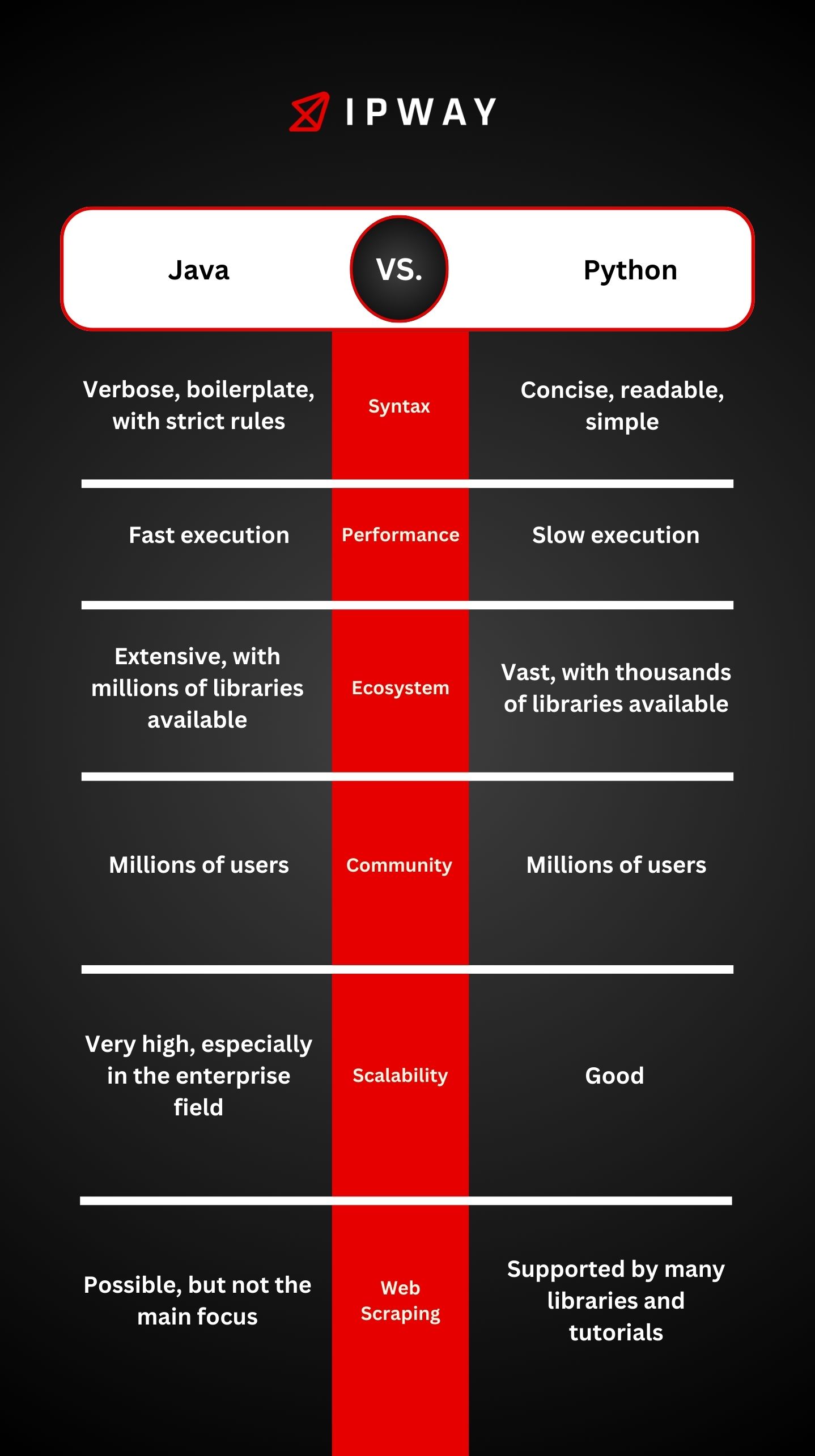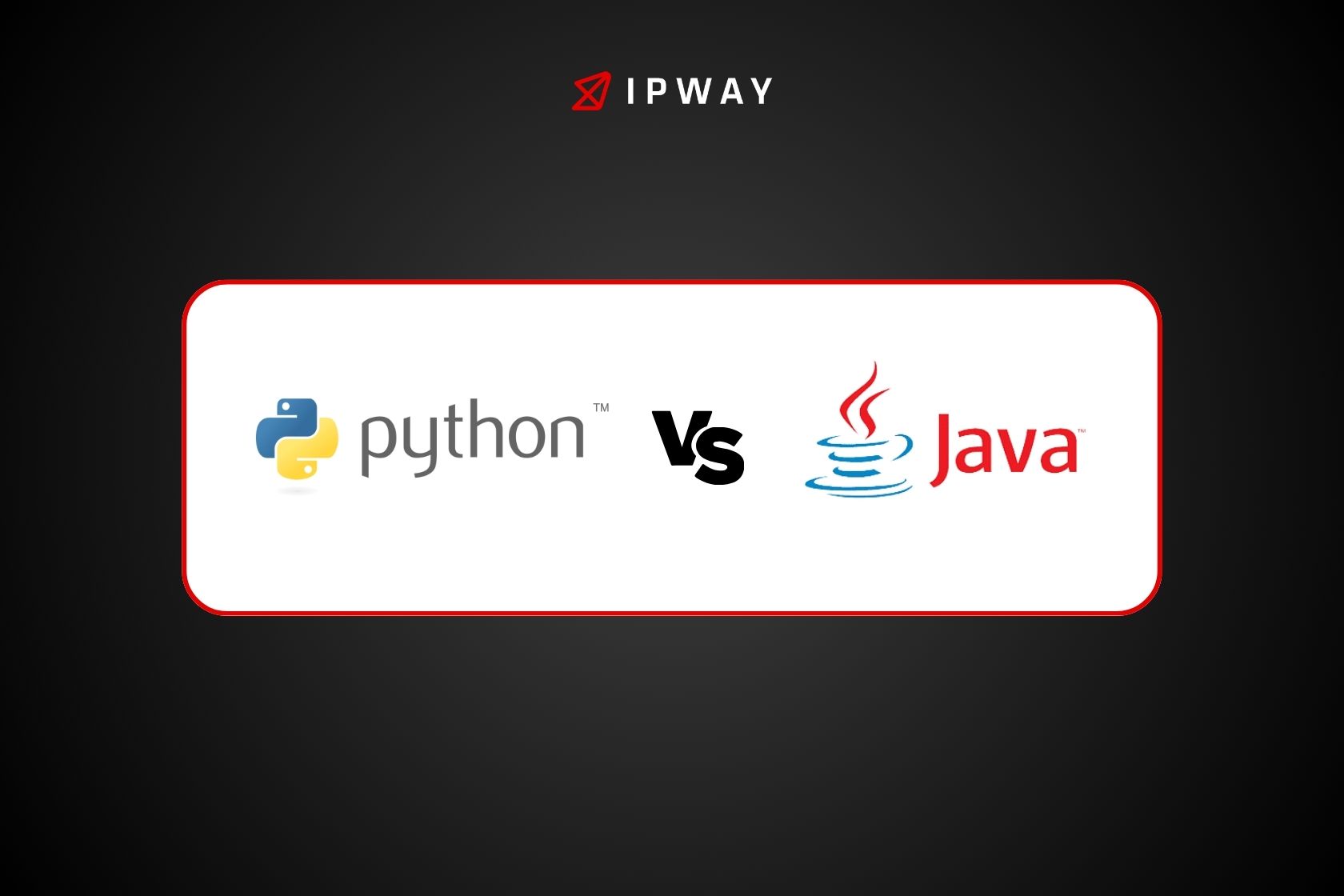In the hubbub of the tech industry, two coding languages have reigned supreme for years dominating the programming realm: Java vs Python. These giants have driven a range of applications from simple web tools to the intricate algorithms controlling the operations of the International Space Station.
However in the debate between Java vs Python it’s not merely a matter of choosing one over the other. It’s, about recognizing their strengths and weaknesses and determining which language best suits your project requirements, career aspirations or personal inclinations.
What Is Python?
Python is known for its simplicity and elegance having been introduced in the 1980s with a focus on readability and efficiency. Its syntax resembles English enabling developers to convey ideas compared to other programming languages. Python is dynamically typed eliminating the need to explicitly declare types, which enhances flexibility and speeds up development.
It excels in fields such as web development, data analysis, artificial intelligence (AI) scientific computing, among others. The availability of libraries and frameworks like Django Flask for web development and Pandas TensorFlow for data science cements Pythons position as a preferred choice, for developers seeking to drive innovation forward.
What Is Java?
Java however stands strong in settings. Emerging in the mid ’90s it emerged as a solution to the demand for a language not tied to any platform that could operate on any device with a Java Virtual Machine (JVM). Its slogan, “Write Run Anywhere ” captures its universal compatibility.
Java enforces typing, requiring variables to be declared with a specific type and validated during compilation to detect errors early on though this approach demands more initial coding. It serves as the foundation for extensive applications Android applications, web servers and software utilities. Javas reliability, adaptability and expandability are reinforced by frameworks like Spring and Hibernate making it a preferred choice, for developers crafting enduring applications.
Java vs Python: Prons
Python
Readability: Python has a user straightforward syntax, which is ideal for newcomers and effortless, for experienced programmers.
Rapid Development: The changing essence of it accelerates the development process enabling faster prototyping and iteration.
Versatile Libraries: When it comes to AI, web development or data science Pythons libraries offer support to simplify project development.
Java
Cross-Platform Compatibility: The Java Virtual Machine (JVM) allows Java applications to operate on a range of devices expanding their potential, for deployment.
Performance: Javas performance can match that of languages once its Just In Time (JIT) compiler kicks, in following an initial warm up phase.
Strong Community Support: There are plenty of resources, tools and frameworks to developers thanks, to a large ecosystem and a supportive community.
Java vs Python: Cons
Python
Performance Limitations: Pythons flexibility in terms of types can sometimes result in performance when compared to languages such, as Java that are statically typed.
Mobile Development: Although Python has the capability for creating applications it may not be as intuitive or streamlined, as Java particularly when it comes to developing Android apps.
Java
Verbose Syntax: In comparison, to Python Java necessitates a number of lines of code to achieve similar tasks potentially impeding development speed and complicating code readability.
Memory Consumption: Applications developed in Java often require memory usage than those in Python which could pose challenges in environments, with limited resources.
Java vs Python: Which Is Better?
Determining the winner in the realm of programming languages is quite a challenge, especially when Java and Python are the main contenders. Both languages have their advantages excelling in different situations. Lets examine how they fare in scenarios and aspects to gain a better understanding.

Ease of Learning
Many people consider Python to be the programming language for beginners and the reasons are quite clear. Its defining feature is its user simplicity, which combines readability with a straightforward syntax reminiscent of pseudocode.
This ease of use not makes it easier for newcomers to get started but also speeds up the transition from learning to practical application. With its characteristics and a wide range of built in modules in the standard library Python effectively addresses various challenges in programming making it a supportive environment, for aspiring developers.
Java with its syntax and clear typing can be challenging for beginners. The languages wordiness may appear overwhelming initially as newcomers must understand the intricacies of its typing structure. However this particular trait encourages discipline that can reduce errors as developers handle complex projects over time.
Performance Showdown
When it comes to performance Java usually shines, thanks to its compiled nature that connects directly to machine language via bytecode and the JVM. The compilation process provides plenty of chances, for tuning propelling Javas speed of execution beyond that of Python.
Pythons interpreted nature despite its flexibility advantages results, in a runtime overhead that typically puts it behind Java in terms of speed. Nonetheless Pythons capability to incorporate C or C++ libraries helps bridge this gap. Provides a performance boost where it truly matters.
Scaling the Heights
Pythons appeal stems from its straightforwardness, which makes it popular for smaller to sized endeavors. However its Global Interpreter Lock (GIL) poses challenges when it comes to scaling on core systems that are CPU intensive. Nevertheless Python is still, in the running; by implementing planning and utilizing external resources it can effectively achieve scalability.
Java however is designed for long term use. Its strong backing for handling tasks simultaneously and a well established community make it a popular option for creating efficient high capacity applications. Javas structure excels in environments demonstrating its ability to manage intricate spread out systems, with elegance.
The Web Scraping Duel
When it comes to web scraping, which’s a method used to gather data from websites, both Python and Java provide useful tools. Python stands out thanks to its libraries such as BeautifulSoup, Scrapy and Requests which make it easier to create scraping scripts. The simple syntax and abundance of resources in Python make it a popular choice, for putting together data extraction scripts.
In the realm of Java one can utilize Jsoup and HtmlUnit for capabilities especially within the Java ecosystem. Although Java excels in speed in tasks that heavily rely on CPU power, the realm of web scraping tends to lean towards Python due, to its simplicity and vast library support. However organizations deeply ingrained in Java can maintain a technology stack by utilizing it for web scraping purposes.
Conclusion
Deciding between Java vs Python is akin to selecting either a scalpel or a Swiss Army knife: both serve purposes effectively. Take into account your project requirements, your teams expertise and the development environment you are accustomed, to. Whether you opt for Javas methodology or Pythons adaptable nature both languages provide a rewarding development journey and facilitate the creation of impactful software solutions.
In todays changing world of technology the real question isn’t about determining the superior language. It’s more, about identifying the language that aligns best with your requirements and future goals.
Discover how IPWAY’s innovative solutions can revolutionize your web scraping experience for a better and more efficient approach.
